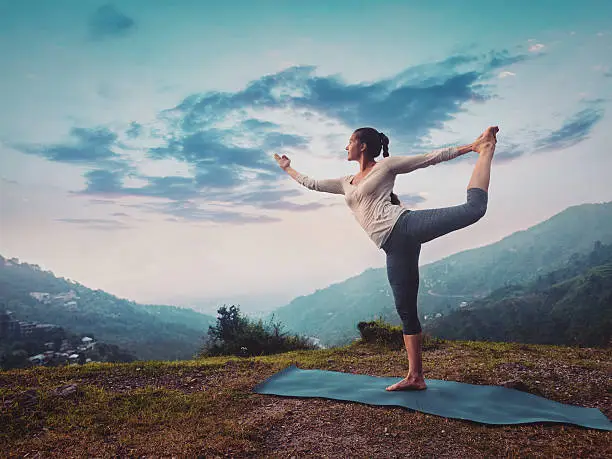In a world that often feels chaotic and disconnected, Vinyasa Yoga offers a moving meditation—a space where breath becomes your rhythm, and movement becomes your message. Unlike slower, static forms of yoga, Vinyasa is dynamic and fluid, often described as a “dance of the breath.”
But beyond its graceful transitions and flowing sequences, Vinyasa Yoga is a deeply personal journey. One that invites you to synchronize body and breath, to find freedom in motion, and to stay present—one inhale, one exhale at a time.
Table of Contents
What Exactly Is Vinyasa Yoga?
The word Vinyasa in Sanskrit can be broken down into “vi” (in a special way) and “nyasa” (to place). So, Vinyasa literally means “to place in a special way.” In the context of yoga, this translates to intentional, conscious movement—where every pose flows into the next, guided by the breath.
A typical Vinyasa class begins with warming up the body and gradually builds into a sequence of postures (asanas), each seamlessly linked. Unlike Hatha Yoga, which focuses on holding poses, Vinyasa feels more like a river—ever-changing, always flowing.
Breath is the Anchor:
If movement is the melody in Vinyasa, breath is the beat. Each inhale lifts you, expands you, energizes you. Each exhale grounds you, releases tension, and deepens your presence. This connection between breath and motion transforms Vinyasa into more than exercise—it becomes a moving meditation.
And on those days when your mind is racing or your heart feels heavy, breath-led movement can bring surprising clarity. It’s a reminder that no matter how turbulent life gets, your breath is always there to bring you home.
A Practice for Every Body:
One of the most beautiful things about Vinyasa Yoga is its adaptability. Whether you’re a beginner just learning sun salutations or a seasoned yogi flowing through inversions, there’s room for everyone on the mat.
No two Vinyasa classes are exactly the same. Sequences are often creative, inspired by the teacher’s style, energy of the class, or even the music. This variety makes the practice engaging and alive—never routine, always evolving.
The Inner Flow:
Yes, Vinyasa strengthens your body, improves flexibility, and boosts cardiovascular health. But the real transformation happens inside.
With every flow, you learn to stay present.
With every breath, you build resilience.
With every fall and rise, you cultivate patience.
Vinyasa teaches that life, like yoga, is constantly moving. Sometimes the pace is fast. Sometimes it’s slow. But if you stay connected to your breath and trust the flow, you’ll always find your way.

It’s Not About the Pose:
In a social media world full of perfect handstands and dramatic backbends, it’s easy to forget: Vinyasa Yoga is not a performance. It’s a practice.
You don’t need to be flexible.
You don’t need to look a certain way.
You just need to show up—honestly, wholeheartedly, and with curiosity.
Because the real essence of Vinyasa lies not in how the pose looks, but in how it feels—to move with intention, to breathe with awareness, and to be fully alive in your body.
Closing Thoughts:
Vinyasa Yoga isn’t about perfection. It’s about presence.
Whether you’re flowing through sun salutations or pausing in child’s pose, the practice reminds you: You are here. You are breathing. You are enough.
So unroll your mat. Inhale deeply. Exhale slowly. And let yourself flow—body, breath, and spirit in harmony.
